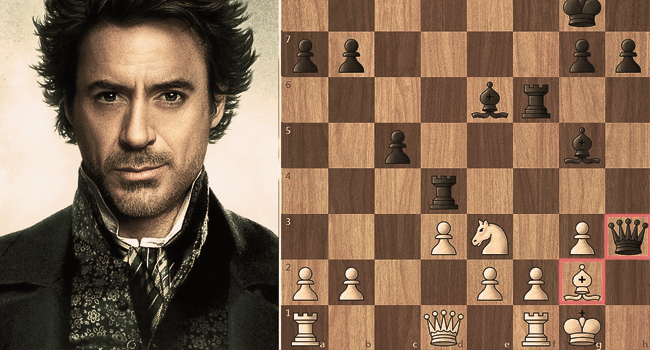Introduction
In the illustrious world of detective fiction, few characters embody intellectual brilliance and malevolence as perfectly as Professor James Moriarty. Often depicted as Sherlock Holmes’ ultimate adversary, Moriarty is a figure of razor-sharp intellect and diabolical schemes. Among the many motifs linked to him, his association with chess stands out—a symbolic reflection of his strategic mind and criminal enterprises.
This article explores the curious case of Professor Moriarty’s chess obsession, analyzing its symbolism, significance, and impact within the Sherlock Holmes canon.
1. Moriarty: The Mastermind
Before examining the chess motif, it’s essential to understand the character. Created by Sir Arthur Conan Doyle, Professor Moriarty is portrayed as a criminal genius who orchestrates complex schemes from the shadows. Though rarely appearing directly in the stories, his presence looms large, positioning him as Holmes’ ultimate intellectual rival—the “Napoleon of crime.”
2. Chess: The Game of Kings and Strategists
Chess has long symbolized intellect, foresight, and patience—traits that mirror Moriarty’s own. Just like in his criminal enterprises, chess requires anticipating an opponent’s moves, planning many steps ahead, and adapting strategies mid-game.
Each chess piece carries symbolic weight: knights as cavalry, bishops as faith, rooks as fortresses, and the queen as the most powerful force. For Moriarty, chess is not just a pastime but a metaphor for his domination of the criminal underworld.
3. The Great Game: Holmes vs. Moriarty
The rivalry between Sherlock Holmes and Professor Moriarty is often compared to a high-stakes game of chess. In The Final Problem, Holmes himself acknowledges Moriarty as “the Napoleon of crime,” cementing their relationship as one of strategic duel rather than brute conflict.
Their encounters are marked by anticipation, countermoves, and psychological warfare—each one seeking to remain one step ahead, just like grandmasters locked in a timeless match.
4. Symbolism and Significance
Moriarty’s chess game serves as a symbol of order versus chaos, intellect versus cunning, and good versus evil.
-
For Moriarty, chess reflects control and domination.
-
For Holmes, countering Moriarty’s moves signifies justice prevailing over corruption.
This symbolism also heightens narrative suspense, as every disguised move feels like another turn in their intellectual chess match.
Conclusion
The chess motif associated with Professor Moriarty adds immense depth to the Sherlock Holmes canon. It transforms his rivalry with Holmes into more than a simple battle of detective versus criminal—it becomes a metaphor for the eternal clash of minds, morality, and power.
From The Final Problem to countless adaptations, Moriarty’s chess obsession remains a powerful literary device that continues to fascinate readers and viewers alike.
FAQs
1. Why is chess often linked to Professor Moriarty?
Chess symbolizes Moriarty’s traits—strategy, foresight, and intellectual mastery—which mirror his role as a criminal mastermind.
2. How does chess heighten the rivalry between Holmes and Moriarty?
It frames their battle as a duel of wits, with each anticipating and countering the other’s moves like chess grandmasters.
3. What does the chess motif symbolize in Sherlock Holmes stories?
It represents the larger conflict of good versus evil, order versus chaos, and intellect versus cunning.
4. Which story emphasizes Moriarty’s role as a chess-like strategist?
The Final Problem most prominently highlights Moriarty’s strategic genius and his rivalry with Holmes.
5. How has chess shaped Moriarty’s character development?
It demonstrates his analytical skills and his status as Holmes’ intellectual equal, adding psychological depth to his villainy.
